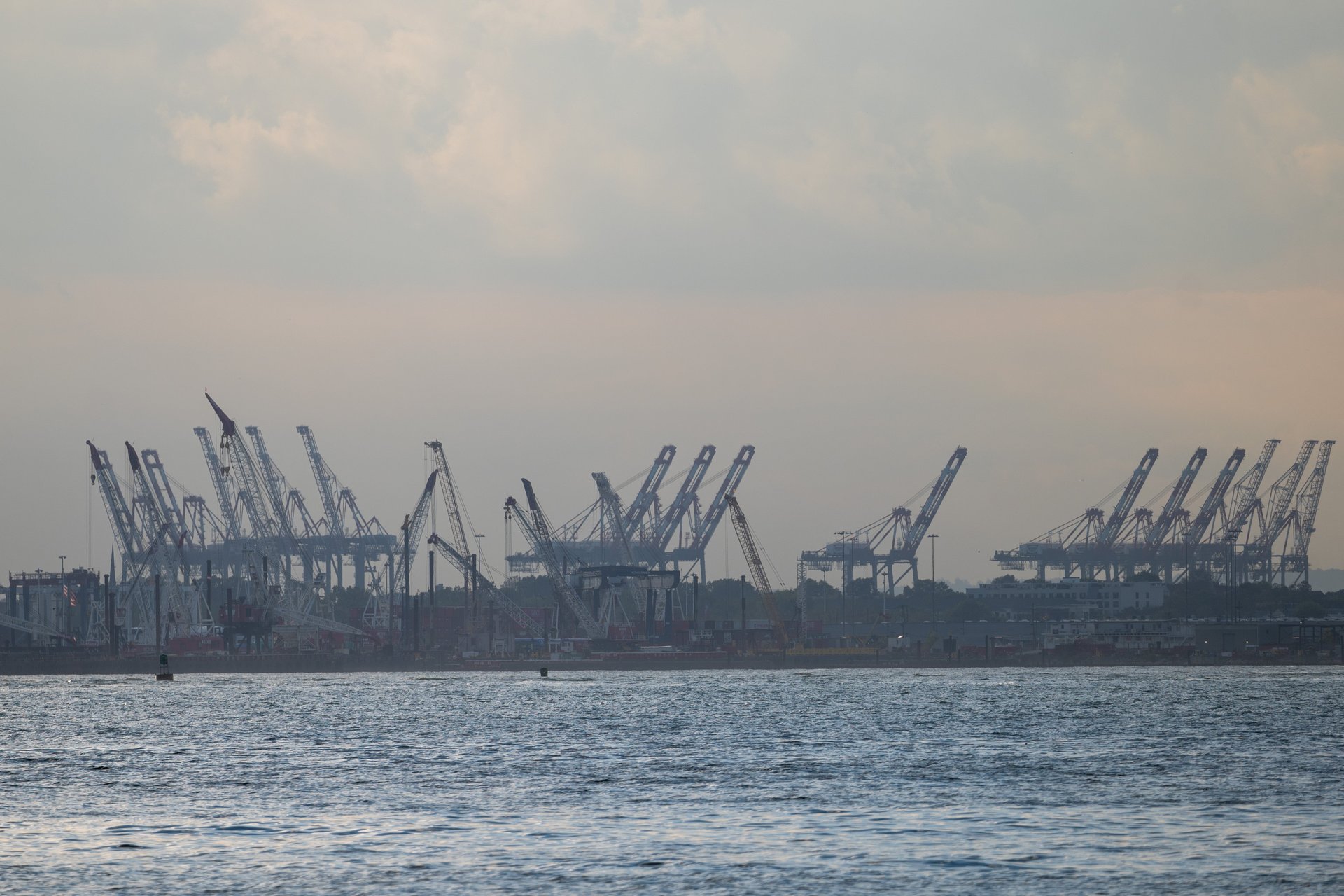14 major East Coast ports affected by the dockworkers' strike
The strike could cost the U.S. economy an estimated $5 billion per day

As many as 45,000 members of the International Longshoreman’s Association (ILA) walked off their jobs at 12:01 ET on Tuesday, marking the union’s first walkout in nearly 50 years.
Suggested Reading
Tuesday marked the expiration of a contract between the port terminals’ operators and the ILA, which covers the workers at 36 ports along the East Coast. The five biggest ports alone — New York and New Jersey, Norfolk, Savannah, Charleston, and Houston — handled more than 1.5 million 20-foot equivalent units (TEUs) valued at $83.7 billion in August, USA Today reported.
Related Content
The 14 major ports impacted (below) account for half of of the United States’ container trade. In all, the affected ports handle roughly $3 trillion annually in U.S. international trade. According to JPMorgan (JPM) analysts, the strike is likely to cost the U.S. economy $5 billion per day.
While the repercussions of the strike won’t be immediate, if prolonged, it could cause inflationary conditions and supply disruptions of items such as meat, fish, bananas and chocolate.
Roughly 75% of the country’s banana imports arrive at the affected ports, as well as 90% of imported cherries and 80% of chocolate arriving via waterborne vessels, according to the American Farm Bureau Federation. Approximately 45% of the U.S. pork exports and 30% of beef exports are shipped through East and Gulf Coast ports.
Raw material supplies for drug manufacturing could also be impacted, as ports on the East Coast are critical to importing generic medicine. Roughly 48% of active pharmaceuticals are imported from India alone. More than one-third of containers with lifesaving medications leave from the port of Norfolk, while a third of containerized pharmaceutical imports enter through Charleston.
The port of Baltimore, meanwhile, leads the nation in car shipment and auto imports. Other goods, such as manufacturing parts and sneakers, are imported heavily along the East Coast.
The strike comes days after Hurricane Helene caused devastation in the Southeastern U.S. “Helene caused ports to delay openings at the ports of Charleston and Savannah, as well as power losses at intermodal facilities in Savannah, Charleston, and Atlanta,” Shana Wray, principal solutions architect for supply chain intelligence firm FourKites told CNBC. “This created ocean, trucking, and rail carriers congestion across Southeast and Gulf ports.”
The Federal Reserve recently cut interest rates, but it could get cautious about further cuts if the strike continues.
